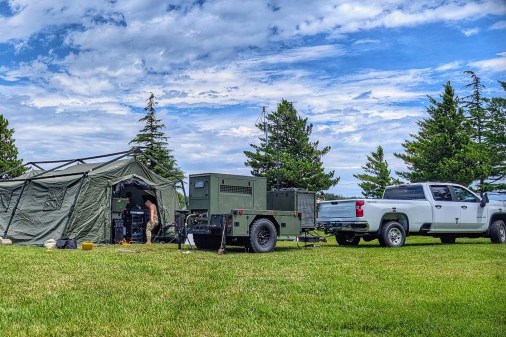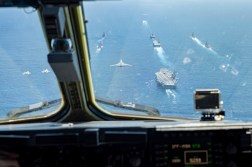Pacific Air Forces eyeing Replicator systems to ‘complement’ day-to-day operations

NATIONAL HARBOR, Md. — The Pentagon’s Replicator capabilities will be instrumental in countering China’s advanced military presence that’s expanding across the Indo-Pacific region, but there’s still much to puzzle out regarding the overarching concepts of operation for the platforms, according to the head of Pacific Air Forces.
Replicator marks the Defense Department’s quickly maturing, strategic effort to accelerate the adoption of “attritable autonomous systems” in multiple combat domains by August 2025, through processes that can be “replicated,” to ultimately deter China. Since Deputy Defense Secretary Kathleen Hicks first unveiled it late last summer, she and those involved have largely been secretive about how Replicator is fully coming together, citing security concerns. But the department intends to spend approximately $1 billion total in the fiscal 2024-2025 time frame to carry out this speedy acquisition pursuit. Hicks also announced in May that DOD has started delivering certain Replicator systems to U.S. Indo-Pacific Command, though details on that continue to remain sparse.
Selections for capabilities that will be mass-produced via Replicator are being made in different tranches — the first two have been dubbed 1.1 and 1.2. Building on previous reporting uncovering systems that have been quietly tapped for Replicator so far this year, DefenseScoop recently published the first report confirming that tranche 1.2 includes drones the Air Force is developing via its Enterprise Test Vehicle (ETV) program.
During a media roundtable at AFA’s Air, Space and Cyber conference on Monday, DefenseScoop asked PACAF Commander Gen. Kevin Schneider and Chief Master Sgt. Kathleen McCool whether officials from the command and elsewhere have established concepts of operation or any official plans for maintaining Replicator systems over time after they’ve been delivered in large quantities.
“The short answer in terms of storage and concepts of employment — no, not at this stage,” Schneider told DefenseScoop.
He emphasized, however, that Replicator is a necessary element of U.S. Indo-Pacific Command’s future force posture — particularly in the aftermath of what he called intense fiscal pressures plaguing the Air Force and the DOD in recent years.
“The number of aircraft that we would have — while incredibly capable — may be a little bit less than we had initially desired as those aircraft were coming onto line. So we have a high-end, highly capable force in many aspects. But I see a complement to that being the ability to have affordable mass — or things that we can deploy in great numbers, that have a significant deterrent value, that can be either in place or be accessible in short order, and can cover a range of challenges and threats,” Schneider said. “So, I see a lot of goodness in that, and certainly it being a complement to what we do every day.”
Schneider reflected on how China continues to move fast to grow and build out its own air force and other military components, and noted how concerns are intensifying about what the Chinese government is “doing through their illegal, coercive, aggressive and deceptive behaviors, [particularly] at the pointy end of the [People’s Liberation Army].”
Despite China’s momentum, though, both Schneider and McCool expressed confidence in the creativity and ingenuity of U.S. service members, and how that might pay off in future conflicts.
“Our airmen are what are going to make the difference. It’s not the equipment they have, but how they are able to execute,” McCool said.






